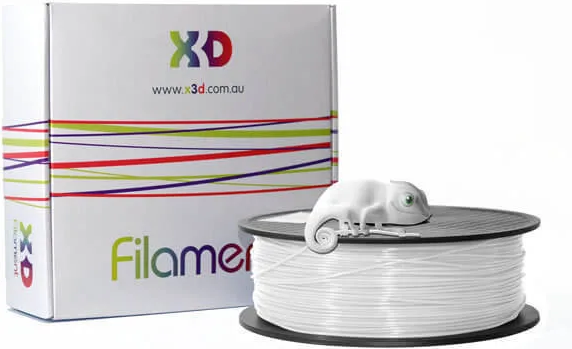
Supports bring stability to the overlying bits of your 3D prints during printing. They are good for your 3D print at least until it’s time for removal where they leave marks and scratches, possibly ruining the print surface.
Good thing there are dissolvable filaments to the rescue. These dissolvable filaments (consisting of HIPS and PVA) can be used in dual extrusion printers. There are distinct differences in uses and characteristics between the two. Read below to find out what they are.
HIPS Filament
HIPS (High Impact Polystyrene) is a dissolvable filament that is commonly used as a support material for ABS prints. It is a lot similar to ABS, except that HIPS is slightly lighter and more dimensionally stable than the former. This makes it a great substitute for ABS when you need lightweight prints for heavy applications, such as cosplay and wearable items and protective casing.
It needs to be dissolved in a substance called D-Limonene in order to be removed from prints. It leaves no marks on the prints upon removal.
Features:
- Lightweight
- Dissolvable by d-Limonene
- Affordable
- Impact and water-resistant
Trade-offs:
- High printing temperature
- Requires ventilation
- Needs a heated bed and heated chamber
Print Settings:
Bed Temperature: 115 °C
Extruder Temperature: 210-250 °C
HIPS Printing Tips
Adjust layer height and extruder temperature settings to prevent layer separation
Cracking and splitting between layers are common when printing with HIPS. To prevent these from happening, you need to lower the layer height and increase the extruder temperature.
Stop HIPS from contracting by increasing the surrounding temperature
When printing, make sure that the surrounding temperature is consistently high by using an enclosure and heated bed.
Improve HIPS’ bed adhesion by using a good build surface
One of the issues with using HIPS is poor bed adhesion. To prevent this, make sure to use a good build surface, such as a Kapton tape, glue stick, PET sheets, or glass plate.
Top HIPS filaments on the market
X3D Pro HIPS

X3D Pro HIPS filament boast of producing smooth and consistent prints every time. They also have no harmful additives, making it RoHS compliant.
Zortrax Z-HIPS

Zortrax Z-HIPS has high-impact resistance, making it perfect for creating prototypes and covers for industrial machines. It also has exceptional processing properties and low shrinkage rate.
PVA Filament
PVA (Polyvinyl Alcohol) is a water-soluble filament that is used as a support material used in conjunction with most types of filaments. They make complicated prints and partially enclosed cavities possible to print. Since it is dissolvable by water, it is hygroscopic or highly sensitive to moisture.
PVA can also be used to print prototypes.
Features:
- Dissolvable by water
- Simple to use
Trade-offs
- Hygroscopic
- Requires air-tight storage
- Clogs nozzles
Print Settings:
Bed Temperature: 115 °C
Extruder Temperature: 200 – 230 ℃
PVA Printing Tips
Be careful with storing PVA filaments
You have to be extra careful when storing PVA filaments due to its moisture-absorbing nature. Store it in a moisture-free, air-tight container to prevent ruining your filaments. You could also put a desiccant inside the container to absorb any moisture within. If you made the mistake of leaving your PVA outside, you can try drying with the use of commercial dehydrator or heating it in an oven at the lowest temperature for several hours.
Top PVA filament on the market
X3D Pro PVA Support

X3D Pro PVA Support is made to withstand long periods of high heat in the hotend without clogging it, unlike other PVA filaments. It is also more rigid in nature, making it great for tall support structures.
Removing support structures doesn’t always have to be difficult, especially when you use dissolvable filaments. Order these dissolvable 3D printer filaments to start creating the most complex designs. If you have questions about support structures, you can contact us through email at x3d@x3d.com.au.

